Nine Innings: Keys to a Dodgers Turnaround, Fixing Ohtani's Workload and MLB's Underappreciated Players

HOW THE DODGERS CAN TURN THEIR SEASON AROUND
By Tom Verducci
The Dodgers, despite their worst quarter-season start since 1958, are not as bad as you might think. And with Justin Turner off the DL, Clayton Kershaw zipping throws from 120 feet on Friday (“Man, that was impressive—same spin, airing it out,” manager Dave Roberts said), 18 of their next 24 games at home, and a run differential (+7) that suggests this team should be better, Los Angeles just might be primed for a rebound in what is a weak National League West.
Here are the three areas where the Dodgers should improve:
1. Home Run Differential
When I asked Roberts about what concerned him over the first 40 games, he replied, “Getting out-slugged. We’re giving up more home runs than we’re hitting. That shouldn’t be the case. We’ve got to turn that around. We just haven’t hit home runs the way we should.”
The lack of pop is particularly evident in the outfield. Dodgers outfielders have hit only 14 home runs, fourth worst in the league. Joc Pederson and Yasiel Puig have five homers in 229 at-bats.
Home run differential is an under-looked metric. I remember when Billy Beane’s Athletics were getting dismissed out of the first round every year and critics would complain they didn’t have the skills to play small ball to win in the postseason. Bunk, Beane said, just about nothing determines game outcome more than hitting more homers than your opponent.
Apply that thinking to a season, and you’re on to something. Last year five of the six best teams by home run differential all made the postseason: the Indians, Diamondbacks and Yankees (all at +49), Astros (+46) and Dodgers (+37). Milwaukee (+39) contended to the end.
This year the Dodgers are -7 in home run differential. That should turn around. This year again you won’t find any surprises among teams with the best home run differential, or those with the worst:
Best Home Run Differentials (Entering Sunday)
Team | Differential |
|---|---|
1. Yankees | +19 |
2. Red Sox | +16 |
3. Astros | +13 |
4. Braves | +11 |
T5. Rockies | +10 |
T5. Phillies | +10 |
T5. Cardinals | +10 |
Worst Home Run Differentials (Entering Sunday)
team | differential |
|---|---|
T1. Marlins | -27 |
T1. Royals | -27 |
3. Reds | -22 |
T4. Tigers | -12 |
T4. Mets | -12 |
2. Defense
Last year the Dodgers were one of the best defensive teams in baseball. They led the major leagues in defensive efficiency (turning 70.3% of balls in play into outs) and were third in batting average allowed on balls in play (.294).
This year? They’ve been one of the worst, ranking 26th in defensive efficiency (68.1%) and 25th in batting average on balls in play (.304).
But with Turner back at third base and Logan Forsythe back at second base, you should start seeing those numbers improve. Chris Taylor is fine at shortstop, but he’s a slight downgrade from Corey Seager, and he’s a better centerfielder than he is a shortstop.
The real answer—to both the upgrades needed in home run differential and defense—is Manny Machado.
Teams rarely make significant trades until after the June draft, and president Andrew Friedman has waited toward the July deadline for his big moves, usually for a pitcher (Yu Darvish, Tony Watson, Tony Cingrani, Rich Hill, Alex Wood). The Dodgers also have a business plan to stay under the luxury tax threshold, so adding Machado sooner rather than later is not going to happen. But eventually, likely after the All-Star break, Machado is the perfect remedy for the Dodgers.
3. Bullpen
When you cut your payroll by more than $50 million, it’s bound to show up somewhere, and in the Dodgers’ case it’s in the bullpen. Take a look at how this year’s Los Angeles pen compares to its pen from last year, with their league ranking included:
| WHIP | rank | era | rank | losses | rank |
|---|---|---|---|---|---|---|
2017 | 1.154 | 1st | 3.78 | 1st | 19 | T4 |
2018 | 1.403 | 14th | 4.48 | 12th | 11 | 15th |
The Dodgers miss Brandon Morrow. But remember, Morrow last year was signed to a minor league deal and didn’t pitch in the majors until May 29. The Dodgers thought Tom Koehler could pick up his innings, but he broke down in spring training. Ross Stripling and Walker Buehler are needed in the rotation—and need to have their innings protected.
Friedman, as he did in Tampa, has been successful finding under-the-radar relievers with outlier stuff (Morrow, Josh Fields, Grant Dayton). Maybe J.T. Chargois, with his high-spin fastball out of a strangely low release point, is the next in line. The Dodgers grabbed him off waivers from the Twins in February. Lined up in the minors are converted shortstop Danny Santana, 22, who whiffed 11 in his Triple-A debut this week and averages 12.9 strikeouts per nine innings over his nine starts; journeyman sidearmer C.C. Lee, 31, who has struck out 38 of the 80 batters he’s faced in Triple A; and converted starter Josh Sborz, who is closing at Triple A, where he was recently promoted for the first time.
THE ANGELS MUST FIND A BETTER WAY TO USE SHOHEI OHTANI
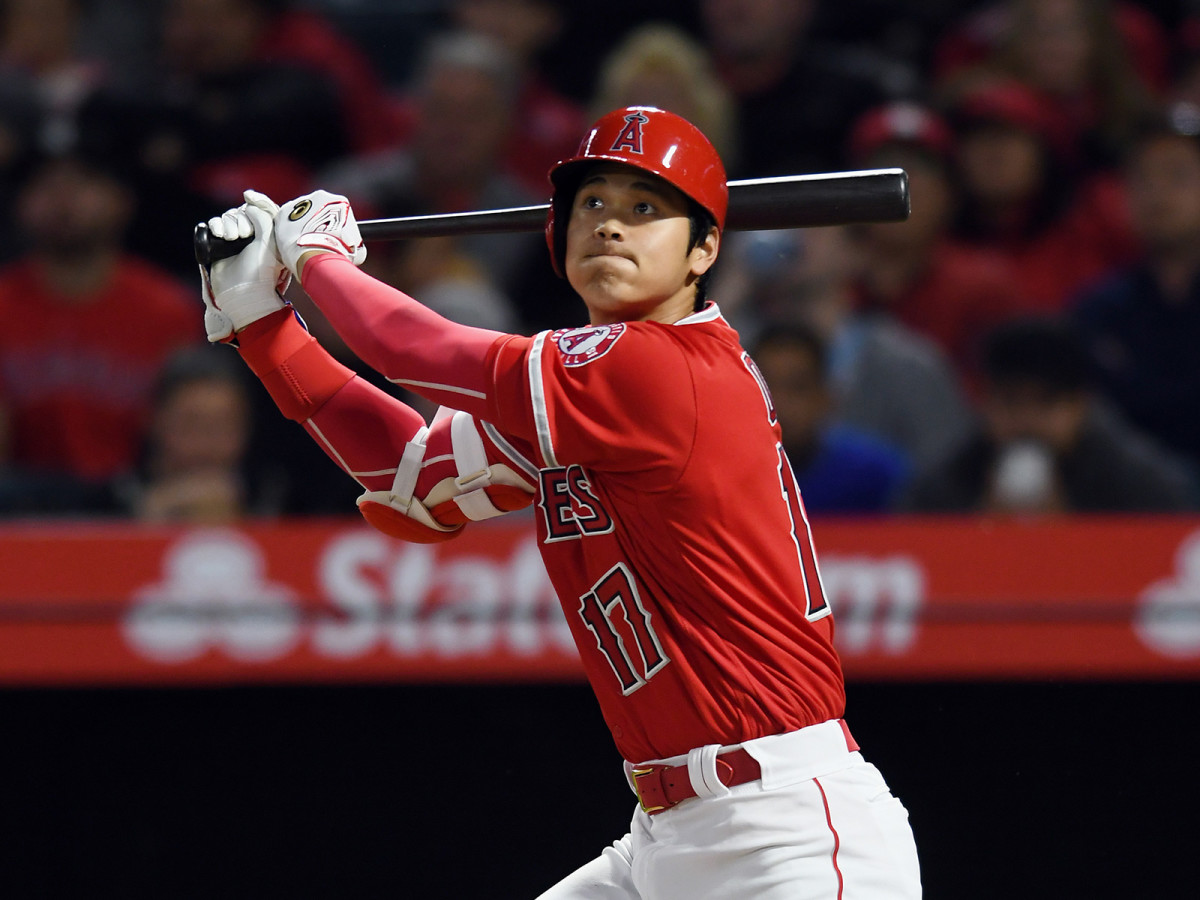
By Tom Verducci
When will the Angels loosen the reins on Shohei Ohtani? Their conservative approach with the two-way star may already have cost them a game.
On May 12, the Angels and Twins were tied 3-3 in the bottom of the 11th inning. The Angels had the winning run, Mike Trout, on third base with two outs. Their next three batters against righthander Trevor Hildenberger were Albert Pujols, Andrelton Simmons and Jefry Marte, all righthanded hitters. Ohtani was manager Mike Scioscia’s best lefthanded bat on the bench. But Ohtani was scheduled to pitch the next day. And opposing managers know that Scioscia gives Ohtani a day off on the days before and after he pitches.
As such, said Twins manager Paul Molitor, “I knew they weren’t going to use Ohtani.”
So Molitor intentionally walked Pujols and Simmons so that Hildenberger could pitch to Marte. Marte grounded out on a soft tapper in front of the plate. The Twins scored two runs in the next inning and won, 5-3.
Shohei Ohtani on Home Run Derby: 'I Don't Think I'm at That Level Yet'
The Angels are only two months into figuring out how to apportion Ohtani’s workload. But the guy is slugging .619 and has 52 total bases in his first 24 games—only Wally Joyner (59) ever had more in franchise history.
At some point Scioscia needs to give Ohtani more at-bats, not just in days before and after he pitches but even in games he starts—either in an interleague game or even in an AL game, which would mean forfeiting the DH by having the pitcher hit. Right now Ohtani is too good not to get more plate appearances—or at least be a threat off the bench. Scioscia is making it too easy on opposing managers.
EXPLAINING THE RAYS' DECISION TO START RELIEVER SERGIO ROMO—TWICE
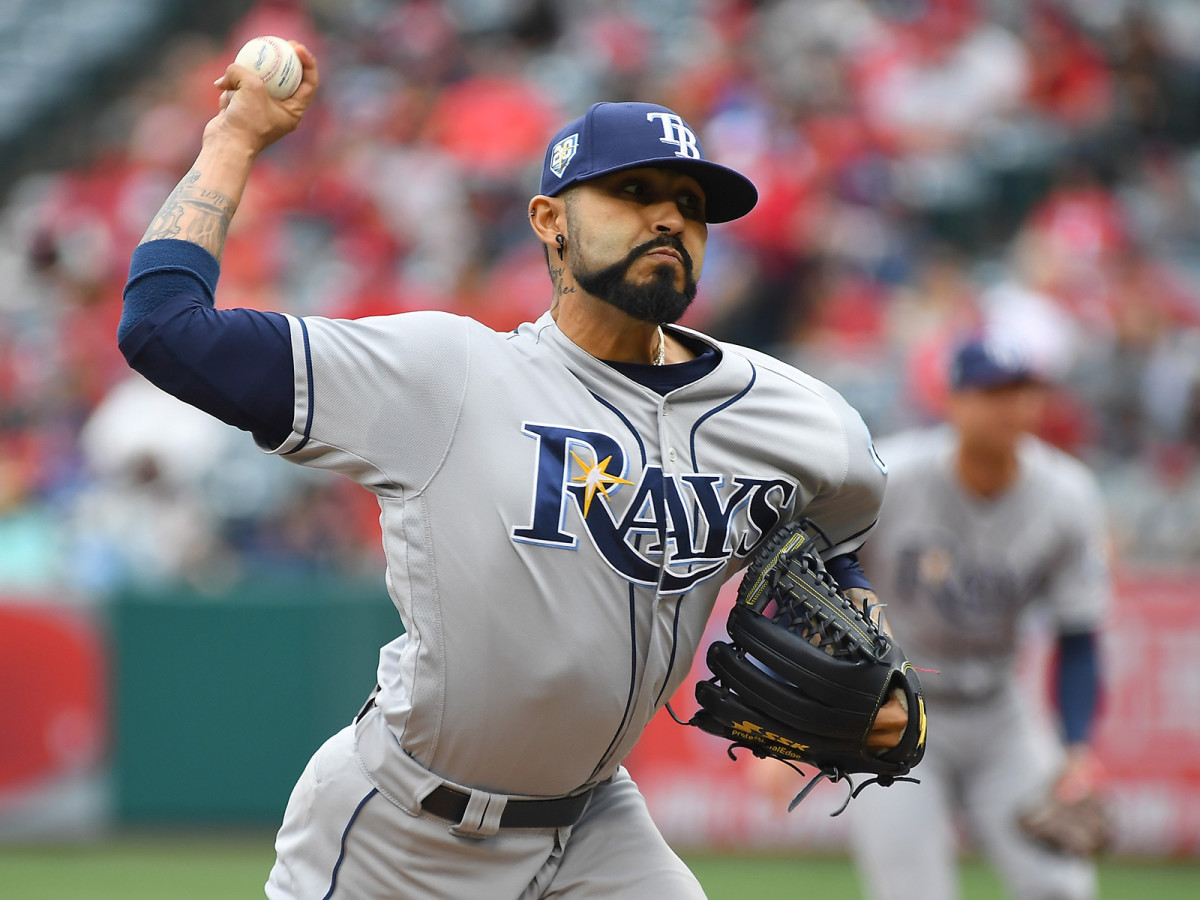
By Emma Baccellieri
Sergio Romo waited 10 years and 588 career appearances to make his first major-league start. He didn’t have to wait at all to make his second.
This was the latest tweak in the Rays’ season-long experimentation with their pitching staff, starting the veteran righthander on both Saturday and Sunday against the Angels. The strategy created some nifty answers to trivia questions—there are only three players whose first start came later in his career, and Romo is the first in six years to start on back-to-back days—but, more importantly, it worked. (Or, at least, it worked well enough.)
Zack Cozart on the #Rays starting Romo on back-to-back days: “It was weird...it’s bad for baseball, in my opinion...It’s spring training. That’s the best way to explain it.” #Angels
— Fabian Ardaya (@FabianArdaya) May 20, 2018
On Saturday, he struck out the side in his single inning of work before being pulled for rookie Ryan Yarbrough, who pitched into the eighth en route to a 5-3 Rays victory. On Sunday, Romo was given the chance to work into the second, but he was yanked after allowing two walks and replaced by Matt Andriese, who gave up two runs in two frames. The Rays pitcher who saw the most work was the final one of the day, Anthony Banda, who pitched the last 3 ⅓ innings and allowed two more runs in the 5-2 loss.
After initially announcing it'd work with a four-man rotation followed by a bullpen day, Tampa Bay pivoted to a three-man rotation with two bullpen days after an elbow injury took out starter Nathan Eovaldi just before Opening Day. But it only took a few weeks for that plan to be scrapped, after it proved too taxing on their relievers, and the Rays reverted to their original plan of a four-man rotation. Technically, it’s fair to say that this weekend’s strategy was just a slight variation on the bullpen days that the team was already using—it was, after all, still an outing cobbled together by a set of relievers. But the spirit of this was something decidedly different, and something that’s perhaps far more likely to catch on.
.@RaysBaseball pitcher Sergio Romo on his two starts in Los Angeles. #RaysUp #MLB pic.twitter.com/2ws67aX5pn
— Bally Sports Florida & Bally Sports Sun (@BallySportsFL) May 21, 2018
The traditional ideal of a bullpen day is a game that effectively pretends it has a conventional starting pitcher, even though it doesn’t. The team hopes the reliever who’s assigned to start will capably go three or four frames, and then they can proceed with managing the bullpen more or less as usual. But this weekend’s strategy, with one pitcher serving as the “opener,” rearranges that convention. Romo was explicitly not being used anything like a starter here. He was being used like the closer he once was: producing one burst of activity in a high-profile spot. Ideally, this should give the manager a new space to cater to match-ups—which was especially visible here on Saturday, when the righthanded Romo made his way through the Angels' righty-heavy top of the lineup before being swapped out for the lefty Yarbrough—and allows the next pitcher up to go deeper into the game without having to run through the order more than twice.
In a sense, this is a logical experiment given today’s pitching trends. As pitch counts are guarded more carefully and the third-time-through-the-order penalty is tested less often, the typical starting pitcher’s outing is shorter than ever before, an average of 90 pitches so far this year, compared to 92 last year and 95 a decade ago. And bullpens are bigger, in the age of the 13-man pitching staff, to accommodate that.
So who’s to say that you shouldn’t try it out? No one, and the Rays are out to prove it.
BEST THING I SAW THIS WEEK: SNAPSHOTS OF THE BRAVES' MIRACULOUS COMEBACK
By Gabriel Baumgaertner
After their astonishing six-run comeback in the ninth inning of Sunday’s game against the Marlins, the Braves improved to 28–17 and stretched their NL East lead to 1.5 games. Of the six ninth-inning runs Atlanta scored in its 10–9 win, five came with two outs. Freddie Freeman beat out an infield single with two outs to keep the game alive; Nick Markakis and Kurt Suzuki singled to bring the game within one run; then Dansby Swanson doubled in game-winning run. But that’s just all some play-by-play that you can watch here.
It wasn’t just the six-run rally that was entrancing; it was the youthful zest of the Baby Braves, who are quickly becoming the most likeable team in the big leagues. Between Ozzie Albies, Ronald Acuña and Dansby Swanson, the effervescence of the Atlanta bench was a joyous and infectious side plot to a fun ninth inning.
Here are Albies and Acuña celebrating while they’re still trailing!
Acuña returns to the top step for encouragement.
Acuña and Albies, only one of whom is of drinking age, manage to keep loose with the game of the line.
And then the joy of victory.
When you’re young, a pro ballplayer, and the future is intact.
The Baby Braves are awesome.
ROUNDTABLE: WHO IS THE MOST UNDERAPPRECIATED PLAYER IN THE GAME TODAY?
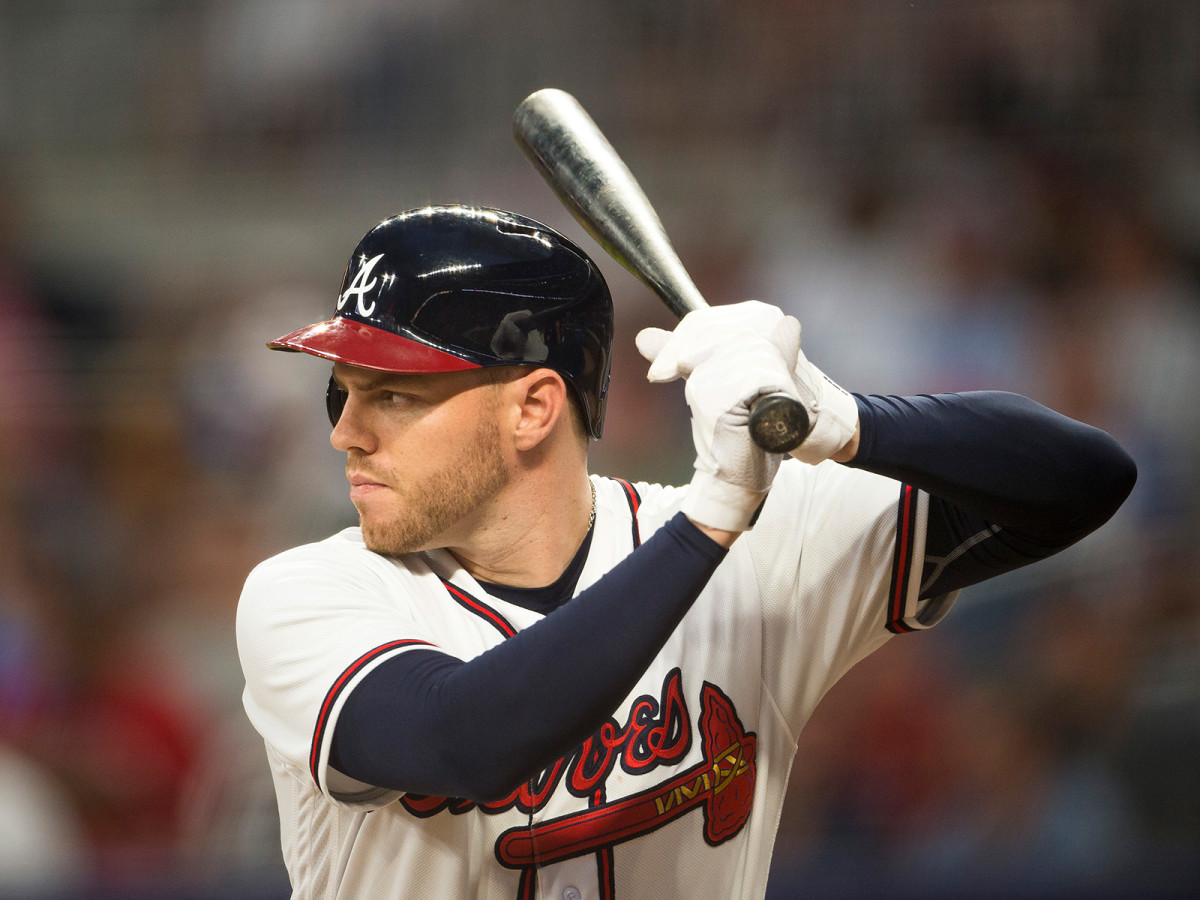
Emma Baccellieri: It’s weird to a call a player underappreciated when he’s received MVP votes in both of his full seasons in the majors. But José Ramírez deserves more appreciation than he gets!
Maybe that's because he's not quite as flashy as teammate Francisco Lindor, who shares the infield with him and is roughly the same age, or perhaps because his prospect hype didn't run too high and his major-league debut wasn't enough to blow anyone away. Regardless, he flies under the radar as a bona fide star-quality player—but make no mistake, that's exactly what he is. Ramírez has been enjoying a pretty sweet start to the season, hitting .302/.392/.615 to secure a space among baseball's 10-best hitters by OPS+ this year. He plays a solid third base, and he's versatile, too: He handled himself well moving over to second in 2016 and even to the outfield in 2017.
And perhaps the scariest thing? He's gotten better every year, with no signs of tapering off.
Gabriel Baumgaertner: Freddie Freeman gets the nod over José Ramirez simply because he's been at it longer. Justin Turner finally received his due recognition last season during the Dodgers' World Series run, so the honor is now bestowed on Freeman, who's been near-brilliant since his age-23 season. Here he is compared to Carl Yastrzemski from their fourth to their ninth big league seasons.
Freeman: 746 games, .300/.394/.520, 130 HR, 449 RBI, 149 OPS+
Yastrzemski: 924 games, .293/.390/.507, 158 HR, 525 RBI, 149 OPS+
The one knock on Freeman is that some feel he doesn't hit for enough power for a first baseman. He hit 62 home runs in his age-26 and age-27 seasons, one of which was interrupted because of injury. Prince Fielder hit a combined 70 home runs at those ages, and he played two full seasons. Freeman's got it all, and maybe the Braves' Cinderella run to the NL East might finally get him the respect he deserves.
WATCH: Braves Score Six Runs in Ninth to Walk-Off vs. Marlins
Michael Beller: Suarez is the most underappreciated player in the league.
Which Suarez? Exactly my point. The fact that you don’t automatically read that as Eugenio Suarez is all the proof I need. Suarez hasn’t put up gaudy numbers in a single season, and he has spent most of his career on terrible Reds teams, leading his production to go largely unnoticed. Suarez enters play Monday hitting .274/.356/.549 with seven homers, eight doubles and 32 RBI in 132 plate appearances.
It takes more than one good season to develop an appreciation gap. Suarez flashed what he could do in 2015, slashing .280/.315/.446 with 13 homers. In 2016, his first full season, he belted 21 homers while playing all but three games for the Reds. Everything came together for Suarez last season. He slashed .260/.367/.461 with 26 homers, 25 doubles and 82 RBI, marking himself as a key player in the Reds rebuild in his age-25 season. Suarez clearly has taken another step this year, and yet, still too few fans outside Cincinnati even know who he is, let alone appreciate his talents.
Jack Dickey: Bring on the charges of homerism: it’s Jacob deGrom. I am perpetually confounded by how little attention deGrom rates from the baseball media. Since the start of the 2014 season, the year he won NL Rookie of the Year, only nine pitchers have accumulated more WAR: Kluber, Scherzer, Kershaw, Sale, Greinke, Arrieta, Cueto, Hamels, and Verlander. If you told baseball fans to guess which Met pitcher ranks 10th on that list, they’d probably offer up deGrom’s teammate Noah Syndergaard or ex-teammate Matt Harvey, before the Amazins’ lean, converted-shortstop ace.
The thing is, deGrom must want it this way. After the 2017 season, he sheared his signature shoulder-length locks, stripping him of a rare distinctive trait. He’s hardly on social media, and I can’t for the life of me remember a thing he’s ever said to the press. Apparently he likes fast food. So do a lot of people. But most of them can’t pitch like he can.
Connor Grossman: Is Shohei Ohtani even the biggest story in Los Angeles after the Dodgers’ bizarre implosion? I can’t help but fantasize about the enormity of each Ohtani start had he signed with the Yankees, or the fanfare that would surround John Sterling’s decision to call Ohtani’s at-bats entirely in Japanese. Back to reality: Ohtani is both hitting and pitching at an elite level—drawing one of the few, if not the only, genuine comparisons to Babe Ruth—and he struggles to draw the daily attention (at least in North America) his performances should be generating. Perhaps a spirited run through the postseason will change things. Unfortunately we’re months away from that, and a playoff berth is no guarantee for the Angels.
WATCH: Cardinals' Jordan Hicks Throws Two 105 MPH Sinkers, Five Fastest Pitches of 2018
Jon Tayler: That we as a society haven’t spent the last two or three years building statues of Mike Trout around the country, or naming expensive public works after him, or that there isn’t a popular religion founded on his works, is insanely at odds with the fact that he’s on pace to have the best individual season in major league history. MLB could re-name the MVP trophy after Trout—hell, they could re-name every trophy after Trout—and it still wouldn’t feel like he gets his proper due. I know that his personality is best described as “404 File Not Found,” or that he plays a solid two-thirds of his season way past the East Coast’s bedtime. To that I give a firm “whatever.” Trout deserves more love and more adulation.
Tom Verducci: Jose Abreu, White Sox. The guy led the league last year in total bases and didn’t even make the All-Star team. Here’s the entire list of players who began their career with four straight seasons with at least 25 homers, 100 RBI and .820 OPS: Joe DiMaggio (1936-39), Albert Pujols (2001-04) and Abreu (2014-17).
He rarely takes a day off and is as reliable as they come. Since he broke into the big leagues only Nolan Arenado and Mike Trout have more extra-base hits, only Jose Altuve and Charlie Blackmon have more hits, and only Arenado has more total bases—and yet Abreu, slogging through a fifth straight losing season with the White Sox, rarely gets mentioned among the best hitters in the game.
THE NUMBERS BEHIND PAUL GOLDSCHMIDT'S ALARMINGLY BAD SEASON
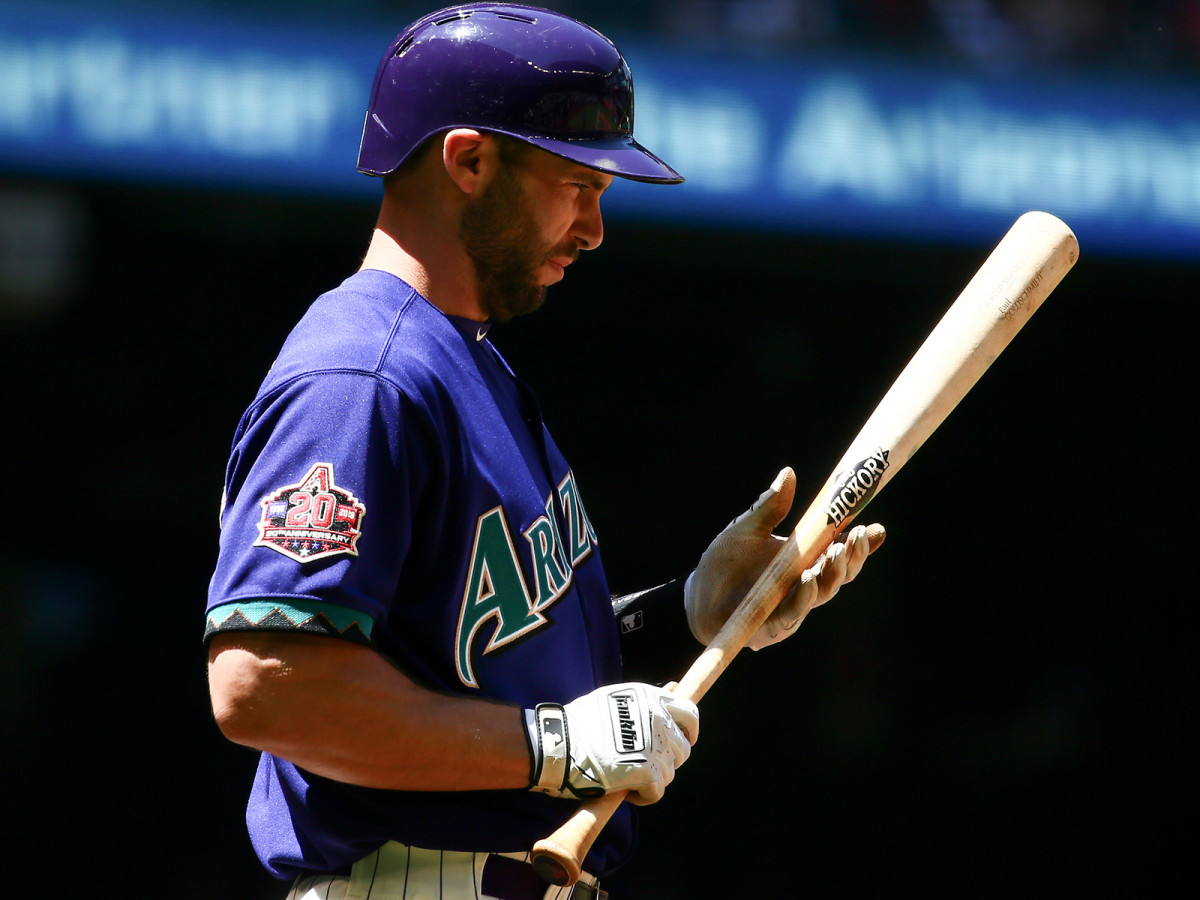
By Jon Tayler
By this stage of the season, with a bitterly cold April behind us and Memorial Day creeping up, we can safely begin to drop the “it’s early” caveat on stats. There’s still room for hot starts to go cold and slumps to turn into streaks, but with seven weeks’ worth of action in the books, numbers are beginning to normalize, and aberrant production—or a lack thereof—no longer feels fluky.
In other words, this is around the time that panic about a player’s struggles begins to grow acute, and where thoughts go from “He’ll snap out of it” to “Okay, what’s wrong with him?” That’s where we find ourselves with Paul Goldschmidt, the Diamondbacks’ MVP-caliber first baseman. For the last five seasons, Goldschmidt has been reliable, excellent, and reliably excellent. He’s hit a collective .304/.410/.543 over those years, and his OPS+ figures are 160, 158, 168, 133, and 142. His 30.9 Wins Above Replacement in that span, meanwhile, are third best in baseball, trailing only Josh Donaldson and Mike Trout. He has long been one of the game’s best and most dependable players.
Nationals Call Up 19-Year-Old Juan Soto
What do we make, then, of the Goldschmidt who exited Sunday’s loss to the Mets hitting a miserable .205/.323/.367? The 2018 version of Goldschmidt looks hopelessly lost at the plate. He leads the National League in strikeouts and has the seventh-highest strikeout rate among all qualified hitters at 31.4%. He’s homered just five times after going deep 36 times last season. An annual staple atop the wRC+ leaderboard, he’s currently hanging out only a couple of floors above the basement alongside lightweights like Jon Jay and James McCann. And for the first time in his career, his weighted on-base average has crashed below the league average after years of floating far above it. Everything that could go wrong has.
So what’s at fault? Goldschmidt is getting killed on fastballs. A year after hitting .331 with a .660 slugging percentage on hard stuff, those stats are down to .264 and .483, respectively. With Goldschmidt struggling to square up fastballs, pitchers are throwing him more first-pitch strikes, but while he’s swinging more at those initial offerings, he’s not doing as much damage (.333/.333/.500) as he did last year (.406/.424/.922) or in his career (.424/.424/.808).
And once pitchers have Goldschmidt in a hole, he’s fallen apart: His line on 0–1 counts is a meager .182/.182/.545, a far cry from his .486/.513/.757 mark in that same situation in 2017. On 0–2, meanwhile, he’s down to .136/.136/.136—not much worse than 2017 (.182/.179/.255) or in his career (.227/.233/.345), but still a step down.
There are a few other issues dogging Goldschmidt. He’s making slightly less contact and swinging and missing a bit more. He’s not hitting the ball as hard or pulling it as much, and his pop-up rate and soft-hit percentage have doubled from last year. All of that is more evidence that he’s not getting barrel on ball as well as he has in the past.
The Reinvigorated and Brilliant Justin Verlander Reaches 2,500 Strikeouts
With players like Goldschmidt, there’s a tendency to wave away worrisome numbers with the assumption that he’s simply too good to be this bad. But this isn’t mere poor luck: This is a hitter who is getting beat by fastballs and finding himself in unmanageable counts. The context surrounding him isn’t particularly positive either. Goldschmidt turned 30 last September, the big round number that generally marks the point of no return for a player’s production. His home confines, meanwhile, aren’t as friendly thanks to the addition of a humidor at Chase Field. That’s already made a difference to overall offense there, but Goldschmidt has apparently felt it more than most. His home numbers have taken a dramatic fall, going from .321/.443/.639 last year to .140/.321/.209, and he has yet to homer in his own park after hitting 20 there in 2017. You can’t blame all of that on a humidor, but it’s not hard to imagine it having some effect.
Goldschmidt’s struggles were a hole papered over in April, when the Diamondbacks roared out to an 18–7 start and a six-game lead in the NL West. But since May 1, everything’s gone belly up: Arizona is 5–13 on the month and has lost 10 of its last 11, shrinking its division advantage to a mere half-game over Colorado. Goldschmidt did finally crack his first home run of the month this weekend against the Mets, but that was one of only two hits in 12 trips to the plate in Queens (including a four-strikeout night in the series opener) as the D-Backs were unceremoniously swept.
Plenty of season remains—four more full months of baseball to go—and a lot of time for Goldschmidt and his team to get right. But we’re rapidly reaching the point at which it’s no longer a slow start; it’s just a slow season.
MEET JORDAN HICKS, BASEBALL'S MOST CONFOUNDING PITCHER
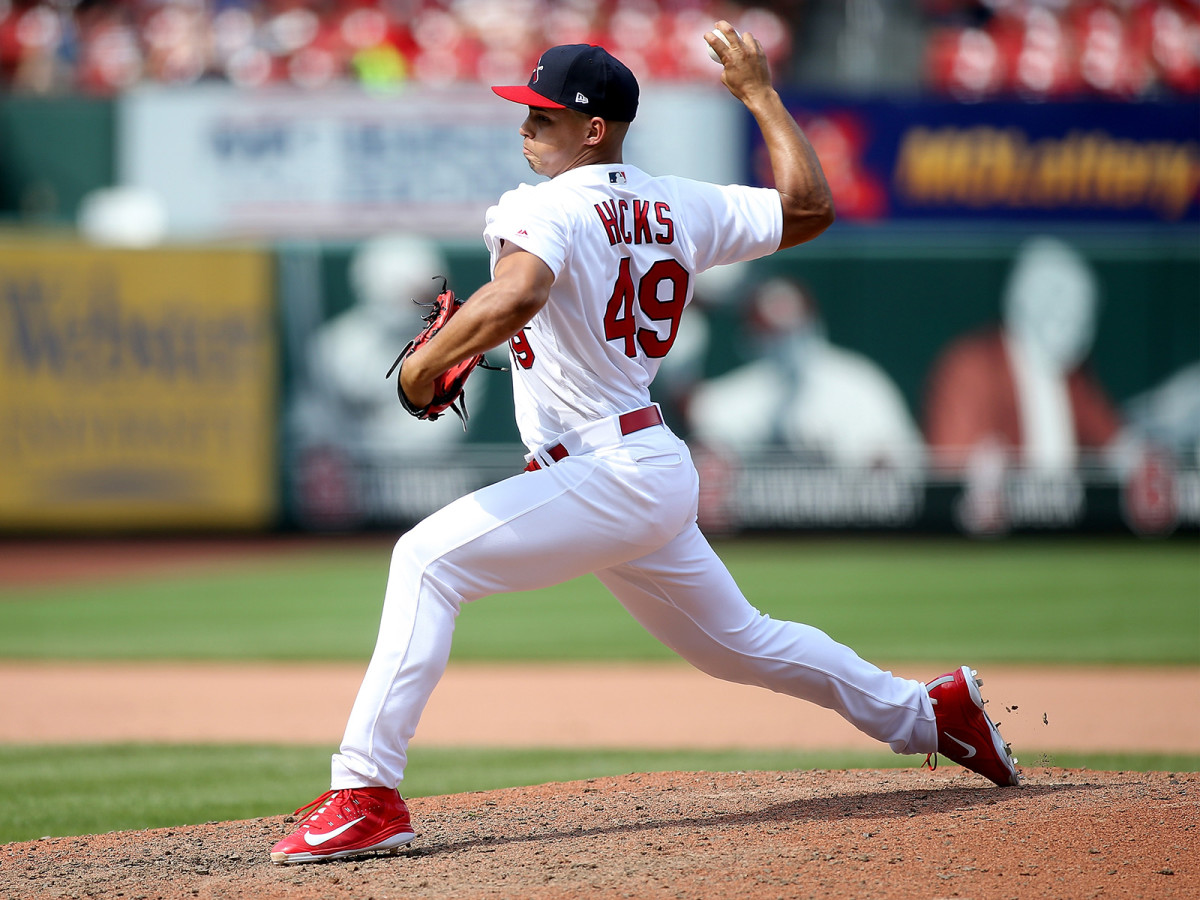
By Jack Dickey
I thought baseball had finally run out of player types to give us. The arrival of Shohei Ohtani—who, here in the early going, appears to be Ryan Klesko and John Smoltz rolled into one—seemed to mark the Baseball Gods’ retirement from the novelty business. "Well, we can’t top this…" Then along came 21-year-old rookie Cardinals reliever Jordan Hicks.
Hicks prompted some deserved hosannas on Sunday when, facing the Phillies’ Odubel Herrera, he threw two sinkers that the Busch Stadium gun clocked at 105 mph. The other three sinkers in that at-bat? 104.2 mph, 104.3 mph, and 103.7 mph. All told, they were the five fastest pitches Statcast has measured in 2018, in the process making Hicks the only pitcher other than Aroldis Chapman ever to register in-game readings of 105 mph.
Watch: Cubs, Reds Involved in Brief Bench-Clearing Incident
But the at-bat against Herrera was notable for another reason: Hicks struck him out swinging. That’s not something Hicks does all that much. Heading into Sunday’s action in this strikeout-happy league, Hicks had struck out just 9% of the batters he had faced, the second-lowest rate among the 236 pitchers with at least 20 innings pitched this year. Alex Claudio, the Rangers’ sinkerballing setup man, brings up the rear at 8%. But Claudio throws his sinker at 87 mph, whereas Hicks’s average sinker sits at 100.
Part of the problem, yes, is that Hicks is not all that good at throwing strikes. He has walked more batters than he has struck out. More than 40% of the pitches he’s thrown hitters have taken as balls, so they don’t swing at his offerings nearly as much as they do as Chapman’s or, say, Josh Hader’s. That doesn’t explain everything, though: Heading into Sunday, Hicks had registered only 20 swings and misses on the 238 hard pitches he’d thrown, which is hard to fathom, given the kind of horizontal movement he can generate.
What’s going on here? The Cardinals know the unreliability of the correlation between fastball velocity and dominating stuff; they employed Joe Kelly for the first two-plus years of his big-league career. But Hicks seems to be a different case. He has been among the league’s best at forcing hitters to hit ground balls (58.7% of the batted balls against him), and when hitters have put the ball in play against him they have made outs almost 80% of the time. He’s dominating by way of weak contact. Maybe in the future hitters will learn to square him up; maybe he’ll learn a lethal changeup. But for now he is just your run-of-the-mill 105-mile-per-hour sinkerballer who is too good to strike hitters out. Baseball always finds a way to surprise you.
HOW KRIS BRYANT HAS GOTTEN EVEN BETTER THIS SEASON
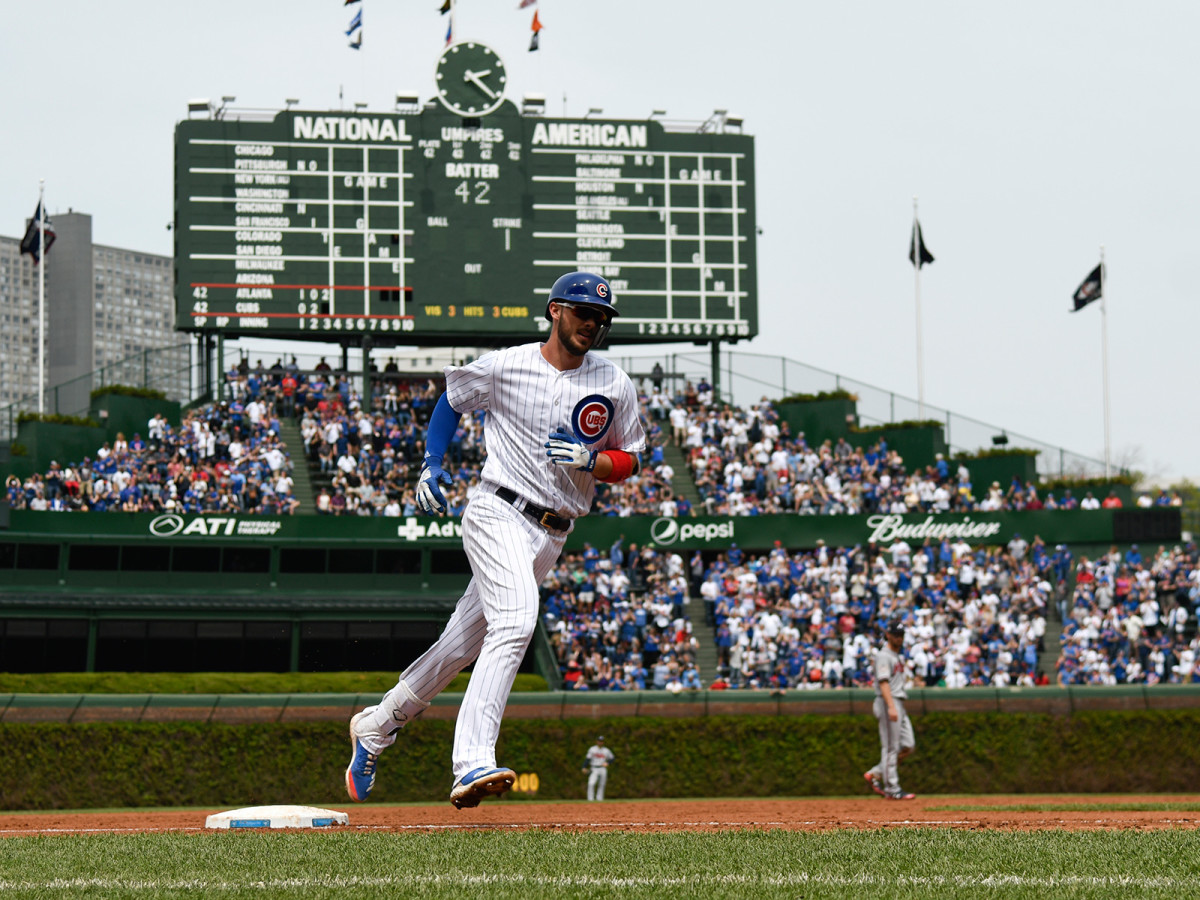
By Michael Beller
Kris Bryant hasn’t taken a wrong turn since entering the majors. In the first three years of his career, he's won Rookie of the Year, MVP, a World Series and went to the NLCS three times, all while hitting .288/.388/.527 with the third-highest fWAR in baseball. That’s about as great a start to a career as a baseball player could hope to have.
If there has been one knock on Bryant during his career, it’s been in the strikeout department. He struck out in 30.6% of his plate appearances as a rookie. Even as he cruised to the NL Rookie of the Year Award that season, there was a hole in that game. Three years later, it's now closed.
Bryant has dramatically slashed his strikeout rate every season in the majors. In 2016, his second year in the league, he cut it down to 22%, which is about league-average. Last year, he trimmed it to 19.2%. This season, Bryant’s strikeout rate is all the way down to 15.7%, equal to Joey Votto’s, famously one of the toughest power hitters to strike out.
That’s a cut of 14.9 percentage points and nearly 50% from his rookie year, which, as we are about to demonstrate, is a historically unique assault on a player’s strikeout rate.
Nationals Call Up 19-Year-Old Juan Soto
Including Bryant’s 2015 season, there have been 60 instances in MLB history of a player totaling a strikeout rate of at least 30% in a single season. Twenty-two players are responsible for those 60 seasons, from Dave Nicholson in 1963 to Aaron Judge and Joey Gallo last year. In between, some of the game’s most infamous whiffers have struck out in at least 30% of their plate appearances, including Chris Davis (six times), Mark Reynolds (six), Adam Dunn (five), Rob Deer (four) and Bo Jackson (four). Jose Hernandez, Jack Cust and Drew Stubbs did it three times. Trevor Story and Michael Taylor have already done it twice, and likely aren’t done. Bryant is part of this ignominious club, but he is a completely different player since joining it.
What’s more, 17 of the 22 players with a 30% strikeout rate in one season have done it at least twice, and two of the five with just one such season are Judge and Gallo, both of whom will likely add a second season this year. Generally, if a player is capable of striking out in 30% of his plate appearances in a single season, he’s always going to be a high strikeout guy. He might cut that rate to 22% or 25% in a single year, but strikeouts are always going to be part of his game. Bryant, again, has broken the mold.
Meet the Rockies' Barrier-Breaking Play-by-Play Announcer: Jenny Cavnar
Before Bryant’s 2017 season, only two players posted a 30% strikeout rate in one season and less than 20% in another. Dan Uggla struck out in 18% of his plate appearances in 2006, and Mike Napoli had a strikeout rate of 19.7% in 2011. Those two, however, posted their sub-20% strikeout rates before their 30% seasons. Bryant’s first sub-20% one came after his 30% season, and, of course, he’s well on his way to a second one this season. Not only will he almost certainly enjoy his second straight season with a strikeout rate of less than 20% this year, but he’ll likely set a new low mark in a single season for players in the club.
A constant need and ability to improve characterizes the greats in every sport. The historic reduction in Bryant’s strikeout rate is just one of the many traits that mark him as a potential all-timer.
FROM THE VAULT: JOSH HAMILTON'S UNFORGETTABLE COMEBACK
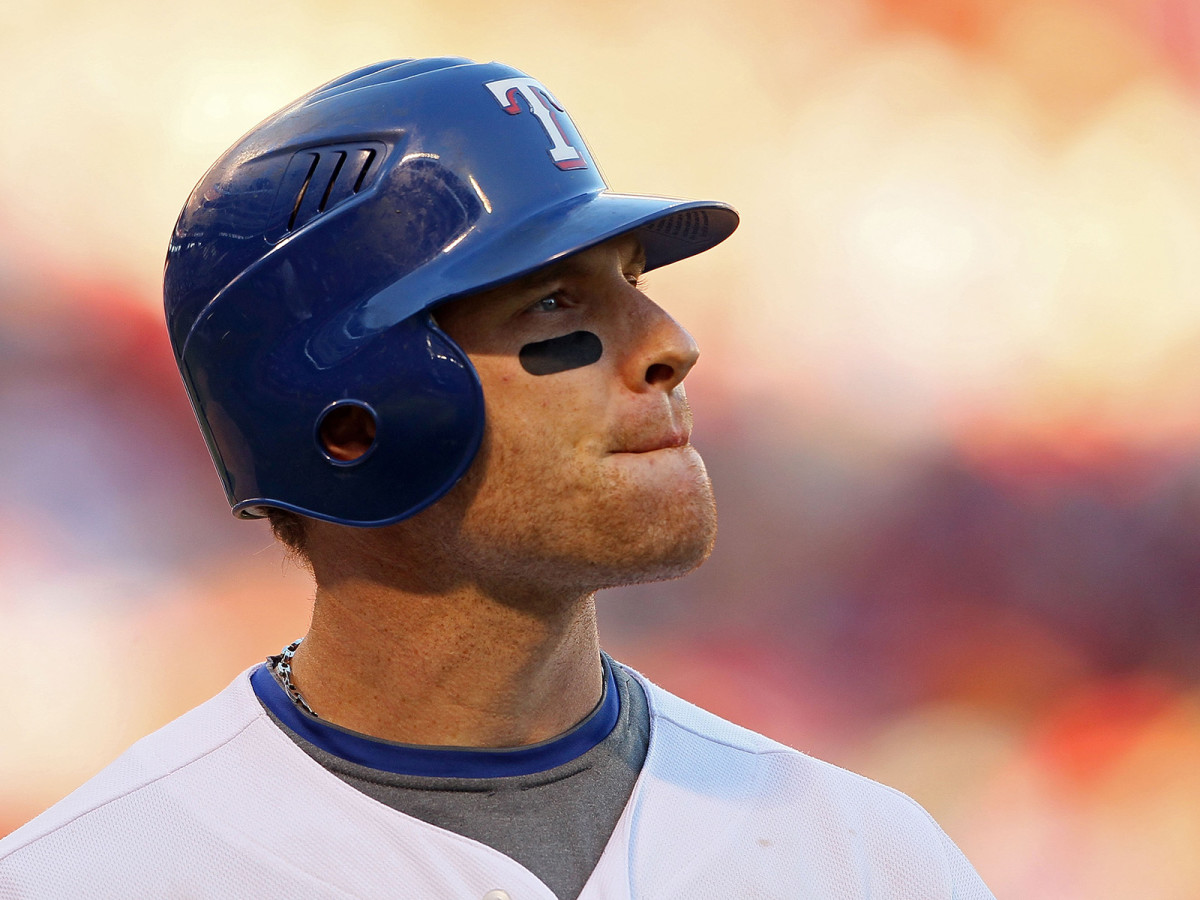
By Connor Grossman
Few professional athletes, if any, have ever authored a comeback story as stirring as Josh Hamilton's. From being selected first overall in the 1999 draft to spending three years out of baseball dealing with addiction to winning AL MVP in 2010, there's a lot of ground to cover from start to finish in Hamilton's career. The five-time All-Star turns 37 Monday, having last appeared in a big league game in 2015.
SI chronicled Hamilton's odyssey in this 2008 cover story by Albert Chen, peeling back the curtain on his see-saw journey: The record signing bonus, the sobering talk at his grandmother's house, the rise to prominence under MLB's watchful eye. This piece came out before Hamilton's MVP campaign and well before his precipitous dropoff after signing a five-year, $125 million deal with the Angels in 2012. Still, Hamilton's comeback tale endures. Enjoy the excerpt below or the entire piece here.
When did he hit rock bottom? Hamilton thinks about this for a moment. So many low points to choose from. No, it wasn't the time the check he made out to a crack dealer bounced and he had to ask his father-in-law to go and give the dealer $2,000 cash. No, it wasn't the time after a party when he ripped the rearview mirror off a friend's truck, punched out the windshield and was thrown in jail. No, rock bottom, he says, was the night in the late summer of 2005 when he awoke from a crack binge in a trailer with a half-dozen strangers around him; with nowhere else to go, he appeared like a ghost at his grandmother's door—his sunken face as white as snow, his 6'4" frame shrunk from 230 pounds to 180. "He'd be at the lowest of lows," says Chadwick, "and he'd sink lower."
No one foresaw the sudden downward spiral—certainly not the Devil Rays, who had drafted him No. 1 out of Raleigh's Athens Drive High in 1999 and enriched him with a then record $3.96 million signing bonus. Josh Hamilton was a once-in-a-generation talent with a golden left arm (as a schoolboy pitcher he consistently hit 96 mph) and a vicious home run swing (his bat speed was once clocked at a ridiculous 110 mph). He was a true five-tool wonder, but what ultimately compelled Tampa Bay to choose Hamilton over another high school phenom, righthander Josh Beckett, was, ironically, Hamilton's sixth tool—what scouts call his "makeup." Said a Devil Rays scout on the day Hamilton was drafted, "I think character may have been the final determining factor. You read so many bad things about professional athletes, but I don't think you ever will about Josh."
